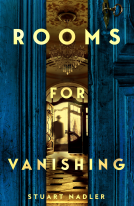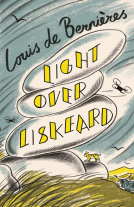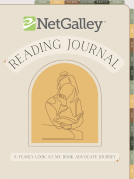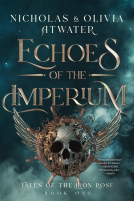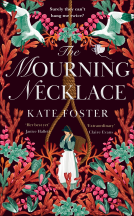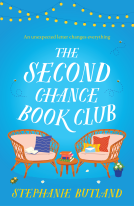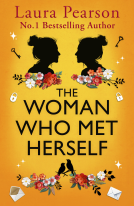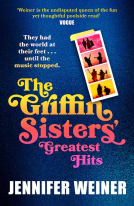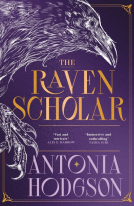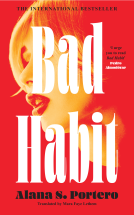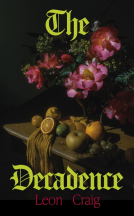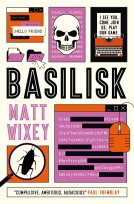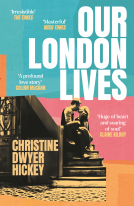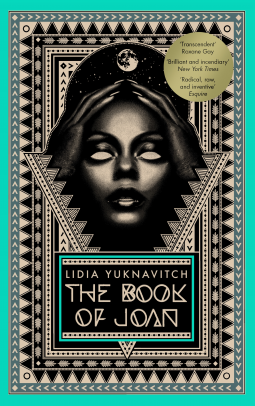
The Book of Joan
by Lidia Yuknavitch
This title was previously available on NetGalley and is now archived.
Send NetGalley books directly to your Kindle or Kindle app
1
To read on a Kindle or Kindle app, please add kindle@netgalley.com as an approved email address to receive files in your Amazon account. Click here for step-by-step instructions.
2
Also find your Kindle email address within your Amazon account, and enter it here.
Pub Date 18 Jan 2018 | Archive Date 18 Jan 2018
Description
New York Times Book Review Editor’s Choice
25 Most Anticipated Books by Women for 2017, Elle Magazine
32 Most Exciting Books Coming Out in 2017, BuzzFeed
15 Best Books of 2017, Esquire
33 New Books to Read in 2017, Huffington Post
In the near future, world wars have transformed the earth into a battleground. Fleeing the unending violence and the planet’s now-radioactive surface, humans have regrouped to a mysterious platform known as CIEL, hovering over their erstwhile home. The changed world has turned evolution on its head: the surviving humans have become sexless, hairless, pale-white creatures floating in isolation, inscribing stories upon their skin.
Out of the ranks of the endless wars rises Jean de Men, a charismatic and bloodthirsty cult leader who turns CIEL into a quasi-corporate police state. A group of rebels unite to dismantle his iron rule - galvanised by the heroic song of Joan, a child-warrior who possesses a mysterious force that lives within her.
A riveting tale of destruction and love found in the direst of places, Lidia Yuknavitch’s The Book of Joan raises questions about what it means to be human, the fluidity of sex and gender, and the role of art as a means for survival. It’s a genre-defying masterpiece that may very well rewire your brain.
Available Editions
| EDITION | Hardcover |
| ISBN | 9781786892393 |
| PRICE | £14.99 (GBP) |
Featured Reviews
Lidia Yuknavitch begins her novel 'The Book of Joan' with beautiful writing which gripped me right away. The at times lyrical, poetic use of language is both evocative and intensely moving.
I read this novel with a tight throat and chills - and wept for Love and Life as it drew to it's end.
A futuristic Joan - girl warrior, Maid of Orleans.... a tale reinvented and expanded, melded with aspects of Shakespeare's 'Tempest' - with religion, spirituality and science moulded together; the magic and energy of creation, destruction and recreation, of Life, in an intriguing and profound way to produce an impressive piece of writing that I was torn between wanting to devour quickly and wanting to savour slowly.
'The Book of Joan' describes a future for humanity which is as poignant as it is strange and terrible, unnerving in the sense of being perfectly within the realms of possibility....though the character of Joan herself takes on mythical qualities, much like her fifteenth century predecessor.
I adore that in this novel the act of writing, marking down thoughts and stories, still brings a feeling of purpose and hope, even at what appears to be the end of the line for humanity.
Also that love holds it's power even after the destruction and devolution of life as we know it.
Among everything else accomplished, the author begins a dissection and blurring of traditionally held thoughts and terms surrounding gender and sexuality. I felt at first that this wasn't taken as far or written about as well as it could have been, but having completed the novel now feel that the process is set in motion to continue to transform beyond the point where we leave the story. Thought provokingly perfect.
Neither dystopian nor sci-fi novels are genres I choose to read often, but I had noticed this title (which combines both) in a couple of 'books to read' articles and was drawn and intrigued, so already had it on my wishlist - I was thrilled to find it on the Netgalley list.
'The Book of Joan' definitely lived up to all of my hopes and expectations. A wonderful novel filled with a balance and intertwining of marvellous parts, of beautiful hope and terrific possibility. Outstanding writing.
Excerpts from the text to illustrate points made above:
"I’ve not seen CIEL from the outside for a long time, but I remember it looking like too many fingers on a ghost-white hand. Sky junk. Rats in a maze, we are. Far enough from the sun to exist in an inhabitable zone, and yet so close, one wrong move and we’re incinerated. In our man-made, free-floating station, with our rage-mouthed Empire Leader, Jean de Men, fastened at the helm of things. We’re the aftermath of earth-life. CIEL was built from redesigned remnants from old space stations and science extensions of former astro and military industrial complexes. We who live here number in the thousands, from what used to be hundreds of countries. Every single one of us was a member of a former ruling class. Earth’s the dying clod beneath us. We siphon and drain resources through invisible technological umbilical cords. Skylines. That almost sounds lyrical."
"I am without gender, mostly. My head is white and waxen. No eyebrows or eyelashes or full lips or anything but jutting bones at the cheeks and shoulders and collarbones and data points, the parts on our bodies where we can interact with technology. I have a slight rise where each breast began, and a kind of mound where my pubic bone should be, but that’s it. Nothing else of woman is left."
"Two things have always ruptured up and through hegemony: art and bodies. That is how art has preserved its toe-hold in our universe.
Where there was poverty, there was also a painting someone stared at until it filled them with grateful tears.
Where there was genocide, there was a song that refused to quiet.
Where a planet was forsaken, there was someone telling a story with their last breath, and someone else carrying it like DNA, or star junk. Hidden matter."
"the world ended at the hands of a girl. What an ungodly choice she made. To destroy life on Earth as we knew it because of the suffering she saw ahead.
When the volcanoes of earth erupted, when the waters rose and Joan emerged, it was clear to me now, we’d gotten the story all wrong. In our desire to claim her as ours, we’d misread our heroine’s aims. We thought she’d wanted to end the Wars, to save mankind, each of us secretly hoping to be chosen.
But Joan knew one thing we never learned: to end war meant to end its maker, to marry creation and destruction rather than hold them in false opposition.
The Bible and the Talmud, the Qur’an and the Bhagavad Gita, the scrolls of Confucius and Purvas and Vedas—all that is over, I understand now. In its place, we begin the Book of Joan."
 Book Trade Professional 279488
Book Trade Professional 279488
How do I even BEGIN to talk about this book. It's been some weeks and I still can't stop thinking about it. This novel is terrifying, and beautiful, and inspiring and upsetting all at the same time. I loved the obvious reference to Joan of Arc as well as Christine de Pizan, the author of 'The City of Ladies'. I don't want to talk too much about the plot as the blurb is pretty succinct at telling you just what you need to know before going in. However I would like to mention that if reading about body horror and sexual assault in detail upsets you, that you should either give this book a pass or proceed with caution.
Anyway, this book If you ask me is probably one of THE BEST books I have read in a very long time. This is the kind of new and exciting SciFi I look for these days. This is the kind of dystopian fiction that excites and terrifies me. The way Lydia writes as well is so entrancing and amazing I just, ahhhh!!!! I CAN'T DESCRIBE. And also the idea of stories written on flesh is so terrifying and 'erotic' at the same time, despite the fact that these bodies are devoid of any eroticism at all.
UGH I JUST LOVE THIS FEMINIST SCIFI DYSTOPIA. READ IT PLEASE.
https://hercommonplaceblog.wordpress.com/
 Sarah C, Reviewer
Sarah C, Reviewer
This took me back to my student days in the 80s, buying second hand Viragos and Women’s Press books at the bookstalls on the South Bank. It feels very much in that tradition of feminist sci-fi, and I haven’t read anything like it for a long time.
The main characters are Christine Pizan and Joan of Dirt, and the action divides between Earth and CIEL, so you can see we are in symbolic territory here. These are figures who trail the herstory movement, and feminist iconography in their wake. It’s almost a religious parable, if your religion encompasses a direct connection with the planet as a living thing, pan-sexuality, and the use of the body as a form of artistic self-expression, and it’s all set in the aftermath of the war that literally ends all wars – and just about everything else.
Big themes. The battle between a dehumanising retreat into technology and the great, visceral natural world, between female strength and de-sexed decadence.
Great images. The descriptions of the new bodies the inhabitants of CIEL have developed – more like living i-phones than real people – and the high-tech prison they have made for themselves, are particularly fascinating.
So there’s all this, and a good story, too. In fact, you could probably just read it as a good story, if you weren’t the kind of person who hung around second-hand bookstalls snapping up second-hand feminist literature in your student days.
Readers who liked this book also liked:
Jennifer Weiner
General Fiction (Adult), New Adult, Women's Fiction
